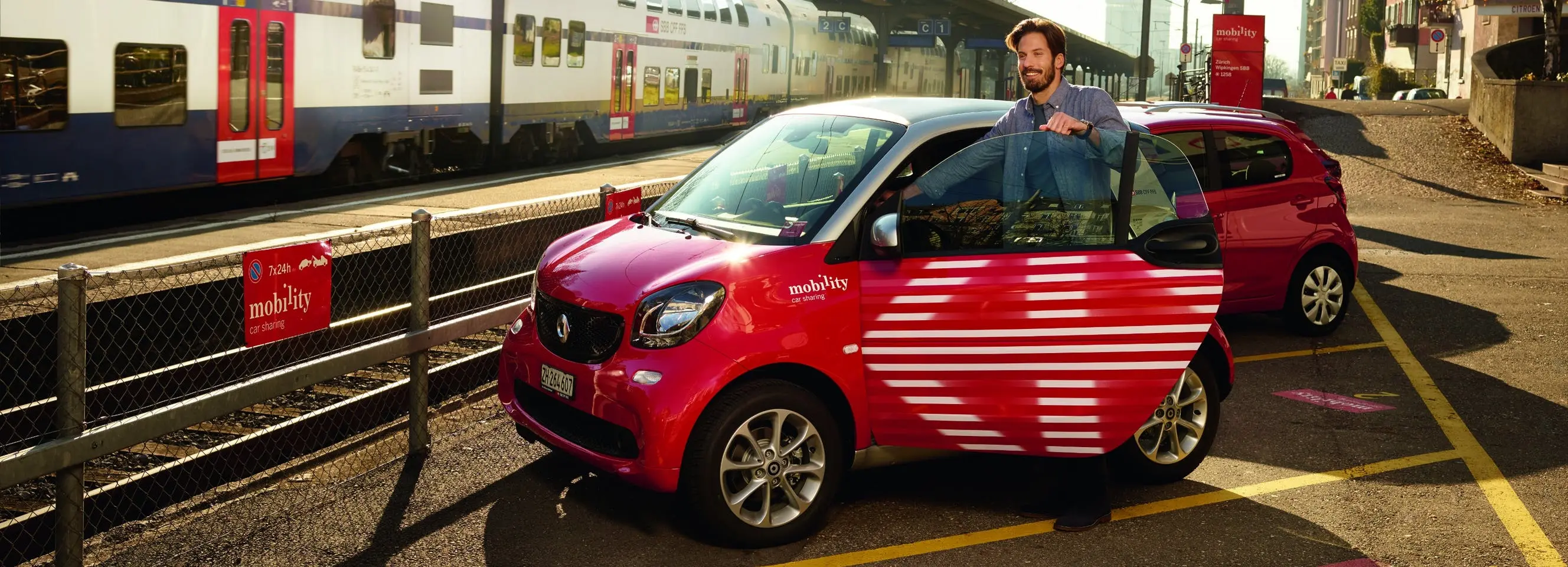Combined Mobility

Function: One also speaks of multimodal mobility. Multi- link transport chain with a combination of different means of transport (on foot, bicycle/e-scooter, car, public transport). Combined mobility focuses on the respective strengths of the individual means of transport and reduces the weaknesses. The interfaces of different means of transport are of central importance. The changeover to public transport is already established in many communities with Park+Ride, Kiss+Ride (taking the car to a public transport stop) and Bike+Ride. For further offers such as car pooling and Bike-/e-Scooter-/Car-Sharing, there are many private sector providers. Many Swiss cities already have "mobility centres" at their stations (see examples) that enable combined mobility.
Advantages: Energy consumption and emissions from transport are reduced. Reduced space requirements to cope with traffic peaks, more cost-effective than continued road expansion.
Disadvantages: Many Swiss households still own a car, the change towards a sharing concept is still difficult.
Examples:
- Mobility centres at railway stations (e.g. Thun, Baden, Leuk) combine sharing offers and public transport
- SBB Green Class, PostBus app for multimodal routing via all mobility (partner) offers
- Public transport apps with automatic recording of the route and subsequent billing: Lezzgo, Fairtiq, ZVV Check-in-Ticket, SBB EasyRide